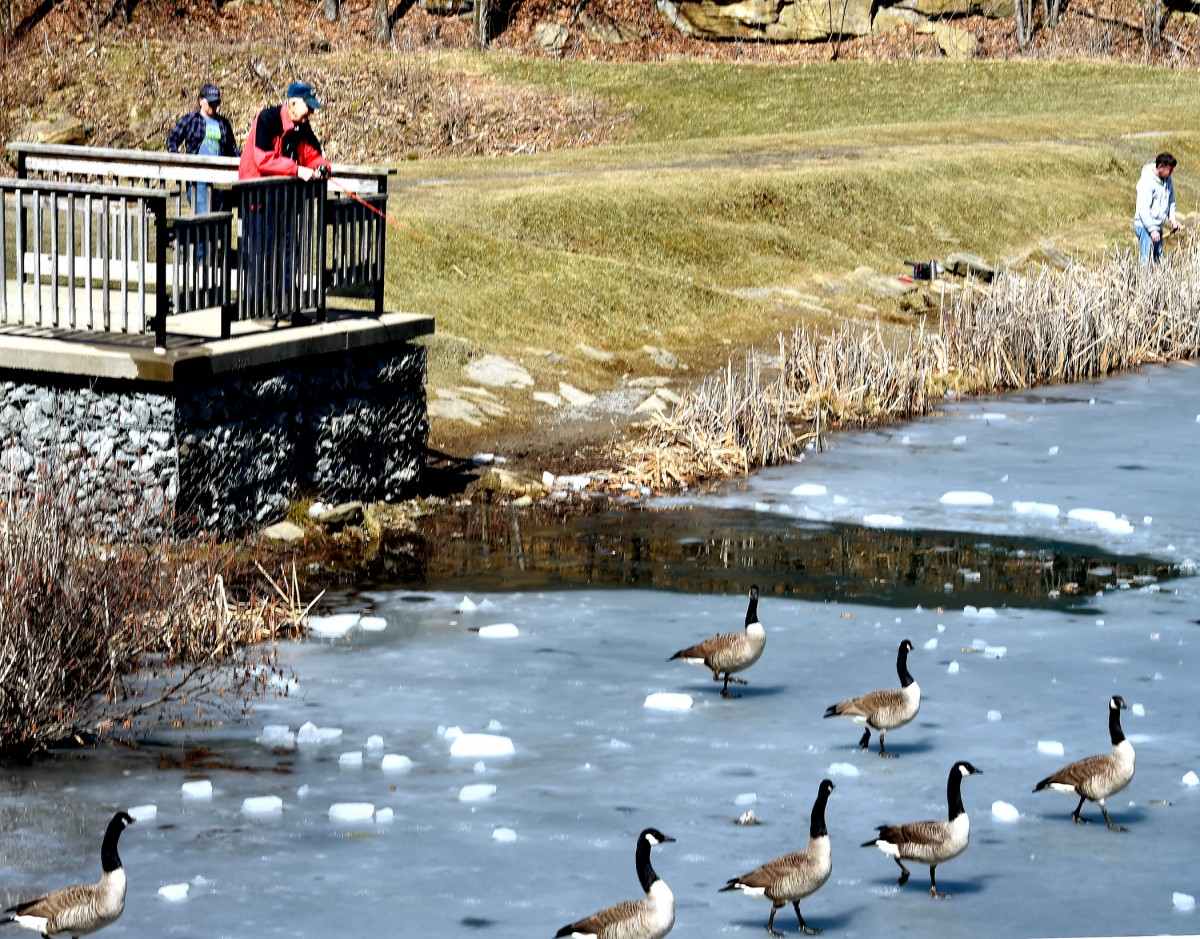COMMENTARY BY DR. DAVE SAMUEL
Most people recognize Canada geese. They are everywhere, so much so it’s hard to believe that in 1995 all goose hunting in the East (Atlantic Flyway) was shut down. Eight years later, there were 175,000 nesting pairs and the numbers have shot up ever since that time, not only in the East, but everywhere.
Many of us have observed those big flying V’s of migratory geese passing over Morgantown, headed for the Chesapeake Bay. Thousands would land on Cheat Lake, resting before their final migratory move. Today, there are more than 5 million breeding pairs, and while that has been a great success story, we’ve seen another development no one predicted. We now have migratory birds that breed in the North and winter in central and southern North America, and we have resident birds that live in towns and stay all year. Therein lies the problem.
The boom in resident geese led to conflicts with city dwellers. And golfers, picnickers, bikers and hikers, too. The other day, I was walking my dog at Cheat Lake Park, and counted 209 geese in the grass by the walking path. Of course, there were goose droppings everywhere, and walking was like playing hop scotch.
It seems that we have resident geese all around town. They eat the grass and defecate on the fairways of every local golf course. They are in people’s yards all around Cheat Lake. They are a nuisance around Edith Barill Park in Star City.
There are several reasons why geese have taken up residence in thousands of cities and towns in the United States. In cities and suburbs, there are fewer predators. Some people feed them, and in addition, being around golf courses and housing developments means there is no hunting. So for the geese, what’s not to like? And geese do well in the urban situation. It turns out resident geese breed at younger ages than migratory geese, and they have larger clutches, too. When it comes to crop damage, and all the other negatives geese bring, the resident birds cause the problems.
Here is an example of the problems city geese can cause: There are an estimated 5,000 geese living in the summer months in Denver. They significantly pollute the lakes and ponds in city and county parks in that area to the tune of 5,000 pounds of goose poop a day. As the director of Denver’s Parks and Recreation Department pointed out, that’s 140,000 pounds of poop a month. There were other problems, too, including overgrazing of grass, destruction of ornamental plants and agricultural crops, and attacks on humans by aggressive birds.
When geese reach high numbers, what can a city do? Remember, geese are protected under the Migratory Bird Treaty Act, so cities with such problems just can’t start killing geese. They need permits from the U.S. Fish and Wildlife Service, and they probably need state permits, too. Hazing birds with loud noises doesn’t work well. Passing regulations to prevent feeding geese can help a little. Denver tried a number of things, such as oiling eggs and using eco-friendly wildlife repellents, but the bird numbers got worse. When all else fails (and most things will not do much to solve the problem), you can round up birds in July when they are molting and can’t fly, and kill the birds. After years of dealing with problems, Denver finally decided to go that route and proposed culling 2,500 birds in the summer of 2019.
As you might imagine, lots of people were opposed to killing “their” geese. One of my former wildlife students, Kendra Teter Cross, formerly of Elkins, works for the federal Department of Agriculture’s Wildlife Services and she led a team that assisted the city of Denver in “culling” geese. However, after rounding up around 2,000 birds and donating the meat to the homeless, animal advocacy groups threatened those involved including Kendra and her family. Security guards were called in, a lawsuit was filed, but in the end, birds were removed. It wasn’t easy, but they did what was best for the citizens and the environment.
We don’t have the big problem Denver had, but we do have a goose problem. Will it continue to grow? Only time will tell, but if we reach the point where birds need to be removed, you can bet some citizens will be upset because they view individual birds rather than a population. No matter, because when human health is involved, what’s good for us may not be what’s good for the gander.
Dr. Samuel is a retired wildlife professor from West Virginia University. His outdoor columns have appeared, and continue to appear, in Bowhunter magazine and the Whitetail Journal. If you have questions or comments on wildlife and conservation issues, email him at drdave4@comcast.net.




